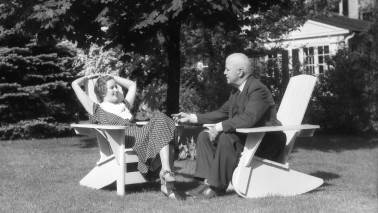‘I will do something sooner or later,’ wrote Beatrix Potter in the secret diary she kept in a private code. It was March 1883 and 16-year-old Potter, still mostly confined to the nursery of her parents’ house in South Kensington, had made a second visit to the Winter Exhibition of old masters at the Royal Academy. She did not identify the ‘something’ she had in mind, but it almost certainly referred to art. Although a painting by Angelica Kauffman stiffened her resolve and bolstered her confidence, the statement was one of intent above conviction. ‘It shows what a woman has done,’ she reassured herself. By the end of the decade she had made good her promise: her first Christmas card designs were published by Hildesheimer & Faulkner in 1890; in the same year her illustrations to doggerel by Frederic Weatherly marked her first sortie into print. In both cases the subjects of Potter’s art were rabbits.
Rabbits overwhelm the posthumous reputation of Beatrix Potter, who was born 150 years ago next year. The astonishing, instantaneous success of The Tale of Peter Rabbit, published in 1902, encouraged publishers Frederick Warne & Co. to describe her as ‘Author of The Tale of Peter Rabbit, &c’ on the title page of subsequent stories. Then, as now, the epithet stuck. Potter stood her rabbits on two legs, she provided them with clothes, handkerchiefs, teapots and, in the case of old Mr Bunny, a sharp little switch, but unlike earlier illustrators she insisted that they remain rabbits, her chief focus anatomies that were very different from the human figure (which she never fully mastered). Like Jane Austen, whom she admired, Potter confined herself to a narrow canvas. Although privately she sometimes tired of rabbits, she remained loyal on the printed page. As in the animal paintings of Landseer, albeit Potter’s work as storybook illustration lacked Landseer’s instinct to grandeur, her vision of English wildlife included both heroism and poetry.







Comments
Join the debate for just £1 a month
Be part of the conversation with other Spectator readers by getting your first three months for £3.
UNLOCK ACCESS Just £1 a monthAlready a subscriber? Log in